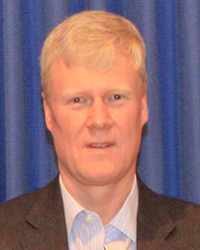Biopharma’s economic impact on Massachusetts - by Thomas Jensen

Integra Realty Resources
The ever-increasing inventory of life science facilities in the Boston area creates another special-use property category for the experienced appraisal profession. Of the current 29 million s/f of lab space in Massachusetts, over 12 million s/f has been added in the last 10 years representing an increase of 71%.
Massachusetts biopharma employment increased 28% over the last 10 years to 69,941 in 2017. Over that same period of time, Massachusetts biotech R&D employment grew 35% to 35,768 surpassed only by California at 39,203. Employment at Massachusetts companies focused on biopharma manufacturing has grown by 5% since 2008, while biomanufacturing jobs in the U.S. as a whole declined by more than 24,000, an 8% decrease. In 2018, the largest biopharma employers in Massachusetts include Sanofi, Shire, Biogen, Novartis, Pfizer, and Takeda. The average biopharma annual wage is $149,731 accounting for $10.4 billion in total MA-based wages.
So, what is driving growth in the region’s biopharma industry?
More than 10% of all NIH funding went to Massachusetts organizations in 2017. The $2.7 billion in funding represents $396 per capita with the next closest state being Maryland at $266. Five of the top six NIH-funded independent hospitals are in Massachusetts including Massachusetts General, Brigham and Women’s, Boston Children’s, Dana-Farber Cancer Institute, and Beth Israel Deaconess Medical Center. Massachusetts receives 57% of all NIH funding to independent hospitals
Venture investment in Massachusetts biopharma companies was $3.1 billion in 2017, up from $1.0 billion over the last 10 years. In the first two quarters of 2018, Massachusetts biopharma companies raised $2.7 billion. It should be noted that 37% of all biopharma VC dollars went to Massachusetts companies in 2017, while Cambridge-based companies received 62% of all biotech venture investment in the state.
There were 12 IPOs from Massachusetts biotech companies in 2017, while 48% of all U.S.-based biotech IPOs in 2017 were from Massachusetts companies. There have been 15 IPOs from Massachusetts biotech companies from January through July of 2018, of which 39% of all U.S.-based biotech IPOs from January to July of 2018 were from Massachusetts companies.
As of August 2018, the Massachusetts drug development pipeline includes 44 candidates pending FDA approval. The inclusion of Pre-Clinical, Phase I, II, and III Massachusetts candidates represents 16% of the U.S. and 6% of the global pipeline. Massachusetts-headquartered companies have developed therapies that treat patient populations of up to 264 million patients in the U.S. and nearly 2 billion worldwide.
How can the public, private, and academic sectors work together?
The Massachusetts Life Sciences Center works with academic institutions, companies, associations, municipalities, and the administration to support the ecosystem with investments in this innovation infrastructure. Massachusetts, while being the most educated in the nation, requires an incubation period longer than any other field. Investments are made in students, educators, and employers to continue producing the most advanced life sciences workforce in the nation. Through these programs, the organization has invested more than $77 million last fiscal year.
As of June 30, 2017, the MLSC managed a portfolio of more than 630 grants and loans. Since its creation, the agency has invested or committed more than $655 million, which has generated more than $2.8 billion in additional investment in the Commonwealth. This has created a portfolio of more than $3.4 billion in public-private investments in the state’s life sciences ecosystem.
To date, MLSC infrastructure investments have contributed or will contribute to the creation of more than 1.8 million s/f of new life sciences research and manufacturing space across the Commonwealth, while creating more than 5,200 jobs in the building trades and in the life sciences.
In June 2018, Governor Baker overcame his initial skepticism and signed a bill (known as the Life
Sciences Initiative 2.0) that invests up to $623 million bond authorization and tax credits over five years in education, research and development, and workforce training over the next five years. The bill expands on a 10-year, $1 billion effort launched by former governor Deval Patrick. The legislation includes capital authorization and job-creating tax incentives. The funding will continue to be managed by the Massachusetts Life Sciences Center (MLSC).
Biopharma’s large space requirements reflect an industry that’s clustering in a handful of metro areas with significant pools of scientific talent. With Greater Boston’s already dominant position with the nation’s most life science doctorate degrees awarded annually, the region’s position is projected to continue strengthening.
Thomas Jensen, MAI, is an associate director at Integra Realty Resources, Boston, Mass.







.png)
